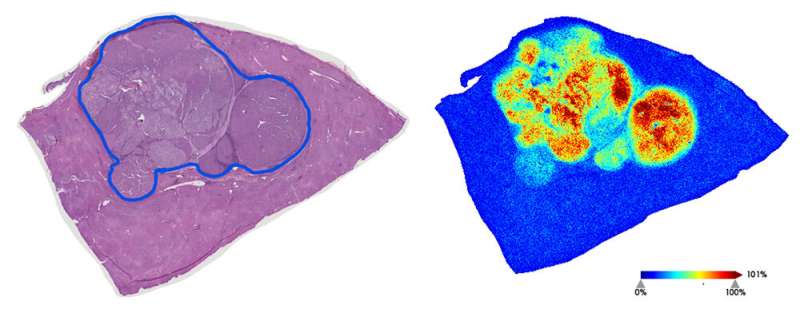Unique sugar structures could identify early-stage liver cancer

Medical University of South Carolina (MUSC) researchers report in Molecular Cancer Research that they have identified specific sugar structures that correlate to specific subtypes of hepatocellular carcinoma (HCC), the most common form of liver cancer. The ability to distinguish HCC subtypes could lead to earlier detection and more targeted therapies for the disease.
Only about 8% of patients with HCC survive, in part because their disease was not detected early, when surgery or chemotherapy might have been more effective. Screening for HCC currently relies on a single biomarker, which may not be relevant to all subtypes, meaning that many cases could be missed.
“We have been thinking about all liver cancers as being the same and using the same diagnostic tool for everyone,” explained Anand Mehta, Ph.D., senior author on the article and professor in the MUSC Department of Cell and Molecular Pharmacology and Experimental Therapeutics. “And that’s a huge limitation in early diagnosis. It’s the biggest hurdle right now.”
Diagnostic tools that are better able to distinguish between HCC subtypes would aid in earlier detection and could lead to more personalized therapies. This approach is already being used for breast and other cancers, and Mehta thinks it could work for liver cancer as well.
In the current study, he and his team, which had previously studied sugar structures in HCC tumors, tried to find a way to correlate specific sugar structures to specific HCC tumor subtypes.
Around 60% of proteins in the human body contain sugars. These specific sugars, N-glycans, change in a cancerous environment. For example, imagine you are deciding which outfit to wear based on the temperature outside. In normal tissue, the proteins are “decorated” with specific sugars, e.g., a thick coat for winter weather. In a tumor, regardless of the environment, the proteins are decorated with sugars at random, e.g., a thick coat and a beanie for summer weather. Mehta and his lab used these specific “outfits” to distinguish the three genetic subtypes of HCC.
“This is the first piece of evidence to show that the genetic subtypes of cancers affect the sugar profile you will see,” said Andrew DelaCourt, a doctoral candidate in the Mehta laboratory and lead author on the article.
DelaCourt thought it particularly interesting that the biomarker currently used to screen for HCC is able to detect only one of the two aggressive subtypes that the team studied, lessening the likelihood that the disease would be detected early in people with that subtype. The researchers found that a particular sugar, fucose, is associated with the other aggressive subtype and could be used as an early-detection biomarker.
For this study, Mehta and DelaCourt identified sugars on HCC tumors, using a technique pioneered at MUSC that relies on the advanced imaging technology MALDI-IMS, which works by determining the mass of the sugars that are cleaved from a tissue sample. With that information, Mehta’s laboratory was able to identify which sugars correlated with which subtype of HCC tumor.
Moving forward, the team wishes to expand this research by investigating whether they can identify HCC subtypes using patient blood samples. A blood-based diagnostic would have several clinical advantages. It would be much less invasive, as it would not require patients to undergo a tumor biopsy. It could also be more easily interpreted, as sugar levels in blood can be assessed with widely available techniques.
Source: Read Full Article
